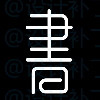
2020IELTS雅思阅读120篇 共2册
正版二手书
¥ 33.75 3.1折 ¥ 109.8 八五品
仅1件
河北保定
认证卖家担保交易快速发货售后保障
作者华研外语
出版社世界图书出版公司
ISBN9787519272739
出版时间2020-01
装帧平装
开本16开
定价109.8元
货号5621497
上书时间2024-10-30
- 最新上架
商品详情
- 品相描述:八五品
- 商品描述
-
商品简介
《雅思阅读(共2册)》旨在帮助考生掌握基础词汇
和语法,提高雅思阅读应试技巧以及扩充知识面,从
而更好地备考;同时,还附赠9堂视频教程,做到同步
讲解,解决考生的疑惑。本书实用性、针对性兼备,
是一本对雅思阅读考试备考有很强的指导性的辅导书
。
作者简介
华研是国内知名的英语教育类图书策划机构,致力为英语学习者提供高效的方法和优质的内容。旗下“华研外语”品牌涵盖大学英语四六级、考研英语、英语专业四八级、雅思、高考英语、英语AB级、中小学英语等系列图书。 TOPWAY是华研的做事原则,表明方法得当就会事半功倍,让您花更少的时间取得更好的学习效果;“沙里淘金”是华研的思维方式,通过语料库分析、词汇分频、难度分级等诸多科学手段,让您抓住问题的关键,用20%的精力取得80%的成效,体现“二八定律”,从而达到“四两拨千斤”的效果。
目录
《雅思阅读1》
Part 1 雅思阅读考试概述
一、测试形式
二、评分标准
三、试题及答案要点
四、考场小贴士
Part 2 基础篇:词汇与语法
一、雅思阅读高频主题词汇
1.历史文明
2.生物科学
3.自然环境
4.教育学习
5.文化与艺术
6.科技发展
7.交通出行
8.经济与管理
9.工农与建筑
10.医疗与健康
11.心理研究
12.社会生活
二、30篇题源阅读记单词.
1.How we make,remember,and forget memories?
2.Genomics:a revolution in health care?
3.Veggie-eating shark surprises scientists
4.The galaxy will crash into its neighbour
5.India is in a historic water crisis
6.Life is sweet:the sugar story
7.Unearthing Iceland's heritage
8.Smarter fish live longer
9.Why the sea is rising at different rates?
10.Are we losing indigenous languages?
11.The future of shopping
12.The Mediterranean — a second ‘Dead Sea'?
13.Weekend lie-ins and sleep loss
14.Loss of biodiversity affects food supply
15.How science fiction can save us from concrete?
16.Disney tops Hollywood hierarchy
17.Women's heart problems
18.Money for nothing won't make us work less
19.Hip surgery couldn't help Andy Murray
20.Can AI stop violent crime before it happens?
21.How Alexa learns?
22.AI's Big Challenge
23.Schizophrenia and the Gut
24.Healthy eating and eating disorder
25.Appreciating the paradox of aging
26.How our minds make sound into music?
27.Me Jane:the real queen of the jungle
28.Neuroscience and business
29.The ‘black box'of a neural network
30.How emotional labour harms us a?
三、雅思阅读语法与长难句11讲
讲座1如何读懂长难句?
讲座2非谓语动词
讲座3定语从句
讲座4名词性从句
讲座5状语从句
讲座6并列平行结构
讲座7同位成分和插入语
讲座8复杂修饰语
讲座9比较结构
讲座10倒装
讲座11虚拟语气
Part 3 技能篇:应试技巧
一、遇到生词怎么办
1.利用专业性词汇定位
2.利用句子成分结构,猜测生词的词性
3.利用构词法和常见词根词缀猜词义
4.利用上下文语境猜词义
二、雅思阅读的同义替换原则
1.数字、比例的同义替换
2.同/近义词、反义词、上义词的同义替换
3.同根词的同义替换
4.句式的同义替换
5.逻辑语义的同义替换
6.同义替换练习
三、精读解题句
1.识别代词的指代
2.识别肯定与否定
3.识别句子弦外之音
四、雅思阅读5大题型解题策略
1.匹配题
2.填空题
3.判断题
4.选择题
5.简答题
Part 4 实战篇:雅思阅读真题还原
Test 1
Test 2
Test 3
Test 4
Test 5
Test 6
Test 7
Test 8
Test 9
Test 10
Test 11
Test 12
Test 13
Test 14
Test 15
Test 16
Test 17
Test 18
Test 19
Test 20
Test 21
Test 22
Test 23
Test 24
Test 25
Test 26
Test 27
Test 28
Test 29
Test 30
《雅思阅读2》
内容摘要
《雅思阅读(共2册)》旨在帮助考生掌握基础词汇和语法,提高雅思阅读应试技巧以及扩充知识面,从而更好地备考;同时,还附赠9堂视频教程,做到同步讲解,解决考生的疑惑。本书实用性、针对性兼备,是一本对雅思阅读考试备考有很强的指导性的辅导书。
主编推荐
《雅思阅读》适用对象:初次接触剑桥雅思考试(学术类,A类)的考生;IELTS英语阅读基础薄弱的考生;不熟悉IELTS雅思阅读题型、缺乏阅读训练的考生;想要提高雅思阅读分数的考生;需要进行课堂教学或自测的雅思培训班师生。推荐理由:1.雅思阅读基础入门,夯实词汇与语法两大基础,90篇机经真题阅读大题量训练;2.通过分析剑桥雅思真题题库以及机经阅读真题,总结出雅思阅读12类常考主题词汇,快速熟悉常考话题;3.精选30篇与真题同源的阅读文章,并提供核心词汇注释和全文翻译,进一步强化雅思阅读高频词汇,了解雅思阅读真题的行文逻辑;4.雅思阅读解题句常见的11类句法难点,结合真题实例逐个讲解,教你分析解题句的结构,了解句式转换的原理,识别同义替换;5.三大实战应试技巧和5种题型的解题策略,实战应对,冲刺高分;6.收集了90篇近年来的实考雅思阅读机经真题,进行精心校对,还原程度几乎与真题一样,配有全文翻译和详细解析,拆解至少1200个考点、精读了1200个解题句;7.书内扫码,即可观看知识点同步讲解课程,线上线下学习、随时随地随意切换。
精彩内容
The Olympic Torch Since 776 B.C., when the Greek people held their first-ever Olympic Games, the Games were hosted every four years at the Olympia city. Back then, a long journey for the Olympic torch was made before the opening ceremony of each Olympic Games. The Greek people would light a cauldron of flames on the altar, a ritual devoted to Hera, the Greek Goddess of birth and marriage. The reintroduction of flame to the Olympics occurred at the Amsterdam 1928 Games, for which a cauldron was lit yet without a torch relay. The 1936 Berlin Summer Games held the first Olympic torch relay, which was not resumed in the Winter Olympics until in 1952. However, in that year the torch was lit not in Olympia, Greece, but in Norway, which was considered as the birthplace of skiing. Until the Innsbruck 1964 Winter Olympics in Austria, the Olympic flame was reignited at Olympia. The torch is originally an abstract concept of a designer or groups of designers. A couple of design groups hand in their drafts to the Olympic Committee in the hope that they would get the chance to create the torch. The group that wins the competition will come up with a design for a torch that has both aesthetic and practical value. After the torch is completed, it has to succeed in going through all sorts of severe weather conditions. The appearance of the modern Olympic torch is attributed to a Disney artist John Hench, who designed the torch for the 1960 Winter Olympics in Squaw Valley, California. His design laid a solid foundation for all the torches in the future. The long trip to the Olympic area is not completed by one single torch, but by thousands of them, so the torch has to be replicated many times. Approximately 10,000 to 15,000 torches are built to fit thousands of runners who take the torches through every section of the Olympic relay. Every single runner can choose to buy his or her torch as a treasurable souvenir when he or she finishes his or her part of the relay. The first torch in the modern Olympics (the 1936 Berlin Games) was made from a slender steel rod with a circular platform at the top and a circular hole in the middle to jet flames. The name of the runner was also inscribed on the platform as a token of thanks. In the earlier days, torches used everything from gunpowder to olive oil as fuels. Some torches adopted a combination of hexamine and naphthalene with a flammable fluid. However, these materials weren’t exactly the ideal fuel sources, and they could be quite hazardous sometimes. In the 1956 Olympics, the torch in the final relay was ignited by magnesium and aluminium, but some flaming pieces fell off and seared the runner’s arms.
— 没有更多了 —













以下为对购买帮助不大的评价